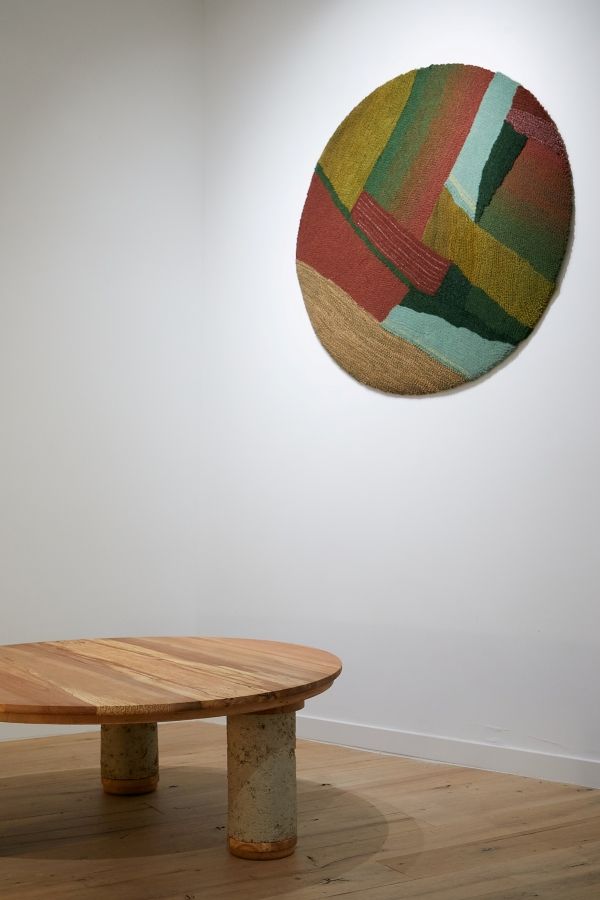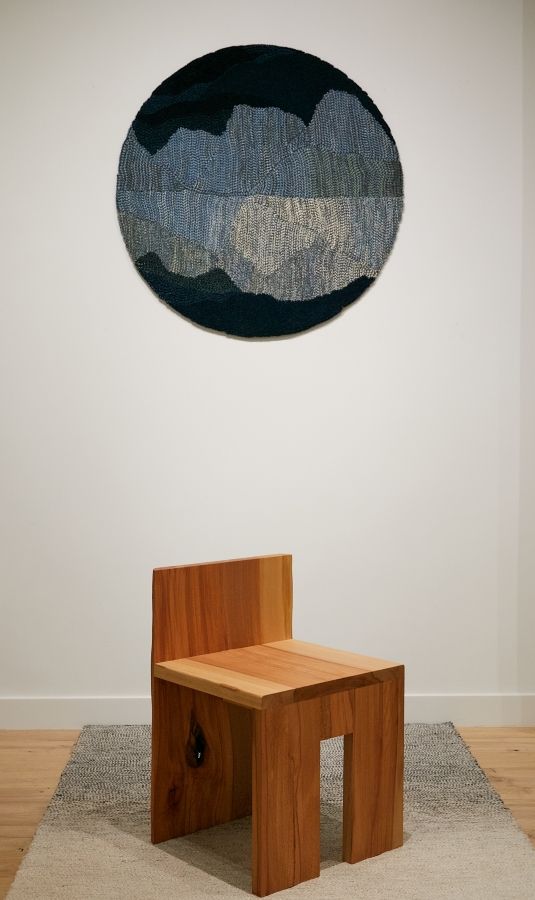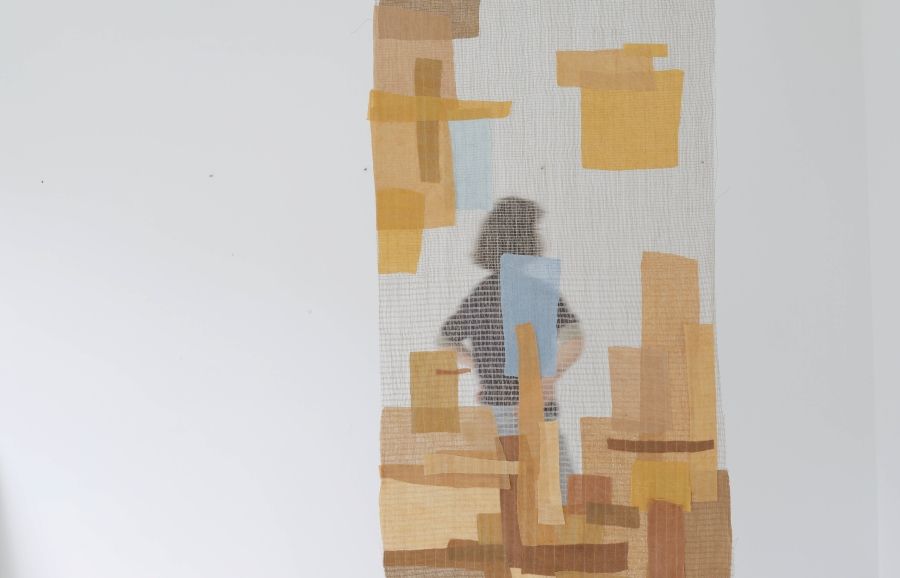
Ariane and Lara van Dievoet are sisters with strong backgrounds among makers and entrepreneurs. Operating under the name Augusta Gallery, in the heart of Brussels’ Sablon district, their gallery promotes newcomers such as French (based in Brussels) duo La Gadoue (Eloïse Maës and Audrey Werthle), as well as Belgian stalwarts such as Lionel Jadot. It is a place of eco-design and, above all, conviction. A discourse apart in the collectible design niche.
What are your respective backgrounds?
Ariane van Dievoet: I studied interior design at the Chelsea College of Art and Design in London. I was able to experiment with 3D and adaptive manufacturing, or how to renovate buildings. I then did a Master’s degree in the United States, at the Rhode Island School of Design, where I took courses in jewellery and woodworking. I spent a lot of time in the workshops, getting familiar with the materials. I then worked at Bower Studios in Brooklyn, before launching my own design business under the name Avandi and applying to exhibit at SaloneSatellite in Milan. That was in 2014 and I won third prize for my Steptool project, which was a kitchen ladder. In 2018, I moved back to Brussels. As I went along, I worked for interior design firms. I then realised that there was an enormous amount of material waste (around 10% of what is ordered for a project, to make up for any shortfalls, is often thrown away). From then on, my work dynamic changed and I specialised in sustainable design using digital techniques.
Lara van Dievoet: My background is both academic and journalistic. As a journalist, I spent seven years covering entrepreneurial news and profiles while completing a PhD in information and communication. Today, I teach press relations and web information formats at UCLouvain and the University of Lille, alongside the Augusta adventure

How did the idea for the Augusta Gallery come about?
AVD: We had been wanting to work together for some time, but what convinced us was the prospect of combining our skills – design and communications – to showcase designers with a sustainable approach.
LVD: Our starting point was the location, a former art gallery on the ground floor of a house that belonged to our grandparents. It was here, in early 2022, that we began to imagine what Augusta would become.
AVD: Before we started, we realised that there was no commercial exhibition space where sustainability issues in design could be highlighted. This theme was beginning to emerge, but more in exhibitions and magazines. So the first step was to renovate the gallery, with as many reused and bio-sourced materials as possible. The place hadn’t changed in 40 years.

Ariane, how did you get started on the road to sustainability?
When I returned to Brussels, I first found a shared workshop, the Micro Factory, where I could make pieces from scrap material. Then, my meeting with ironworker Didier Henry was both professional and friendly and enabled me to master a material (brass) and at the same time embrace the notion of imperfection in design. The result of this collaboration with Didier, a line of non-functional works entitled “Fusions” (one-off pieces), is now on show at Augusta Gallery. One of the advantages of working with off-cuts is that you can discover new skills and handle materials that you are not necessarily an expert with. You have to work with existing materials to find solutions.

Ariane and Lara, was the durability of the pieces you present at Augusta a trigger for the gallery’s first sales?
LVD: Sustainable design isn’t always obvious at first glance. We offer high-end pieces that are made with sustainability in mind. This is what interests us and seemed to interest our first customers.
AVD: Yes, we feel that the approach is twofold: our audience is attracted to the aesthetics of the pieces, while being very interested in the production techniques at the same time. This is also true for designers; as a design teacher, I can see that sustainability is an issue that affects young designers.
Why did you name the gallery Augusta?
AVD: It was the first name of our great-grandmother, who owned a gallery in the 1920s. She had a gallery on Rue de la Loi(!), now a thoroughfare in the European Quarter.

Augusta opened in 2023 with a group exhibition. Is your approach primarily collective?
LVD: It’s true that our first “States of Matter” exhibition brought together a range of designers who use bio-based materials, reuse materials or propose solutions that we consider innovative or part of a sustainable approach, and we continue to exhibit some of these designers, such as La Gadoue and Roxane Lahidji. But we alternate; our second exhibition, “Chromatic Array”, was devoted entirely to the work of Frédérique Hoet-Segers, who was born in 1929 and died in 2022. We wanted to highlight her career, her unique work using leather scraps and her collaboration with Delvaux.
AVD: What’s important for us is to bring together audiences and designers of all generations. An audience that can afford to support these designers, and also an audience that is visually stimulated by contact with their creations. The emphasis is as much on the research behind the pieces we exhibit as on the finished product. And we realise that audiences are pleasantly surprised, asking questions and trying to find out how we do it.

This seems to be reflected in your choice of local design…
LVD: Yes, at the moment they are all Belgians or people based in Belgium, including several Frenchwomen. European provenance is fundamental to us in this project.
AVD: It also has to do with the way we work with designers. Whether they contact us via Instagram or come to us directly (which was the case for our first participation in this year’s Collectible fair), it is always important for us to meet them at their workshop or production site to understand their creative process and touch what they make.
Are you promoting Belgianness?
AVD: We’ve noticed that there is a perception and expectation of what Belgian design is today, especially among foreign collectors.
LVD: Belgian design receives good press and is well recognised on the international scene, even in North America, which helps us because this reputation means that everyone looks at what is going on in Belgium, and more specifically in Brussels.

How do you support the designers you show?
AVD: We discuss the selection of pieces, materials and colours in advance, but give them a great deal of freedom in their processes. Our collaborations are based on mutual trust, as most pieces are created for the gallery. We work with the designers for several months before each exhibition; we visit their studios and meet them regularly.
LVD: What is also important for us is to be able to take a step back from what we are exhibiting. It’s important to understand and select what you want to show and support. Will the focus be on a particular material? A type of production? A final rendering? Or an artist’s seminal body of work (as was the case with the Frédérique Hoet-Segers exhibition)? We decide on these points together before moving forward with an exhibition concept. The final result must be high-end and speak to all kinds of audiences.

What techniques or production methods would you like to highlight in future exhibitions?
AVD: Our current exhibition (“From the Ground Up”, until 15 June) features works by designers who share a sustainable, research-oriented approach and use local reclaimed materials: excavated earth, recycled wire and local wood, including traditionally discarded wood parts and even wood shavings. We are showing six pieces by Laure Kasiers, who has been working with linen and wool to create carpets with organic motifs for 16 years. This Brussels designer has created her own process by hijacking passementerie techniques. Wood from the Sonian cooperative, which promotes local timber, also has a prominent place, as we exhibit pieces in beech from the Sonian Forest by various designers. A prototype chair in living willow by Antwerp duo Studio PART completes the selection. It is an amazing project, called Tenir, in which trees are placed in an aluminium shape that will be removed after several years, leaving only trees that have grown as benches.

How do you plan to keep the gallery active beside the shows?
LVD: We will soon develop the events component within the gallery, such as hosting corporate events and collectors’ dinners.
